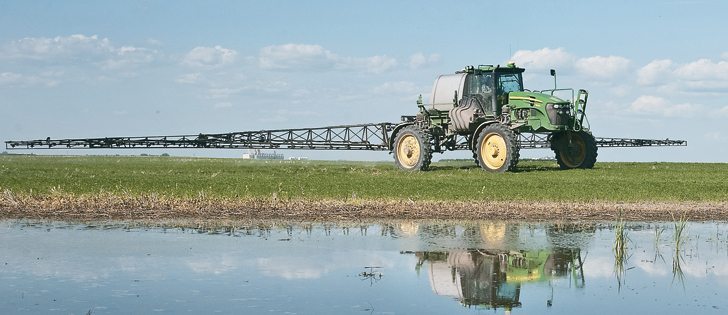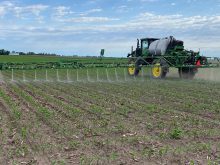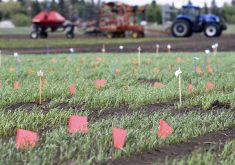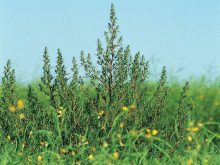While many growers rely on herbicide and crop rotations, a U.S. study finds tank mixtures more effective
A new research study from Illinois casts doubt on a commonly promoted method to combat herbicide resistant weeds.
The study of herbicide records from hundreds of fields over an eight-year period in that state showed that rotating herbicides from year to year increased the likelihood of developing glyphosate resistant weeds.
Joe Vink, weed management technical lead with Monsanto Canada, said the surprising findings run contrary to a commonly held belief that changing up herbicides prevents resistant weeds.
“It can be a portion of your weed management program, but if that’s the only thing you’re doing is rotating herbicides and think you’re done, then you have a false sense of security,” he recently told farmers attending Agri-Trend’s 2015 Farm Forum event.
Read Also

Farming Smarter receives financial boost from Alberta government for potato research
Farming Smarter near Lethbridge got a boost to its research equipment, thanks to the Alberta government’s increase in funding for research associations.
Vink said growers are better off tank mixing herbicides so that they are applying two or more modes of action to their fields.
“More and more experts support the evidence that mixtures are more effective than herbicide rotation,” he said.
Mixtures can be highly effective in combating herbicide resistance, and growers should strive to use multiple modes of action on every acre of their land every year, he said.
“It’s not as easy as it sounds, obviously, because the way it is, not a lot of herbicides have the same efficacy as glyphosate does on such a broad range of weeds.”
That’s why 71 percent of the gly-phosate used by western Canadian farmers in 2014 was applied alone, eight percent was a glyphosate co-pack and 21 percent was tank mixed.
Glyphosate is classified as a low risk herbicide for weed resistance. By contrast, Group 1 and 2 herbicides are considered high risk.
Vink said glyphosate will remain low risk as long as it is used properly, such as in tank mixes.
However, the foundation for weed resistance management will always be crop rotation, with ideally three or more crops.
There is a strong case for western Canadian growers to employ an oilseed-cereal-pulse rotation.
Vink said it is even better if growers throw a forage or winter crop into the mix.
In almost every case, glyphosate resistance was found after a farmer didn’t follow the recommended crop and herbicide diversity.
The first case of glyphosate resistant waterhemp in Ontario was found in a field where the farmer had grown soybeans for nine consecutive years.
“Glyphosate was applied at least twice every single year,” he said.
It was the same scenario with glyphosate resistant giant ragweed. The Ontario farmer planted soybeans for six consecutive years and applied only glyphosate at least twice a year.
Alberta’s first case of glyphosate resistant kochia was on a farm where the grower relied solely on glyphosate for weed management in his fallow rotations for six to eight years. There was no history of Roundup Ready crops on that farm.
Farmers should also consider using non-herbicide weed management tools.
“This gets kicked under the table, but this is so important.”
Those tools include growing competitive crops that quickly form a canopy, increasing seeding rates and adjusting seeding depth.
Vink said growers shouldn’t be fooled into thinking they can rely on chemical companies to come up with new modes of action to combat resistance.
“To the best of my knowledge, and I’ve talked to many people about this, it’s not going to happen anytime soon,” he said.
“It’s kind of staggering. The last new class of herbicides registered in Canada was the HPPD inhibitors, Group 29. That was in 1982. So it has been a long time.”


















